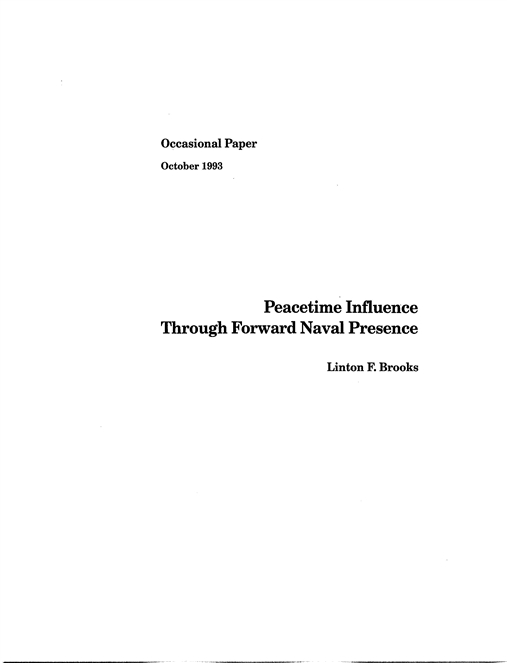The end of the Cold War has both increased the importance and changed the context of peacetime Navy operations. For almost five decades, although the Navy operated globally and responded to crises unrelated to the superpower confrontation, such operations were undertaken against the backdrop of either deterring or preparing for war with the Soviet Union. Peacetime operations were important primarily to the degree that they allowed the Navy to prepare for war.
The situation has changed. In the future, the Navy and the nation must treat peacetime operations as important in their own right, not simply as a preparation for war or crisis. The tar gets of such operations must be an ever-changing list of states, responding to changing national needs; the goal must be to influ ence the behavior of those states.
An emphasis on peacetime operations is, of course, nothing new. The Navy has periodically discovered and rediscovered peacetime operations as a discrete, important Navy mission. In the early 1970s, for example, then Chief of Naval Operations (CNO) Zumwalt put peacetime presence on a par with sea con trol, power projection, and strategic deterrence as the four basic missions of the Navy. That emphasis has faded, however. Although Navy officers and naval analysts have always known instinctively that navies were important vehicles of peacetime influence, this knowledge has played only a secondary role in recent naval thinking and planning. For example, until recently, the formal structure of the Navy's new Joint Mission Assessment process, with the exception of strategic deterrence, was oriented exclusively toward warfighting and gave no weight to the value of presence.
Most Navy officers, whatever their warfighting specialty, wish they knew more about antisubmarine warfare or amphibious warfare or carrier operations or maritime strategy. They know that each of these subjects is an important part of the over all body of knowledge required of the proficient naval warrior. In contrast, although individual academics, analysts, and Navy officers have studied the conduct and debated the value of peace time presence, the profession as a whole does not value presence as an important military task, demanding the same expertise and careful study as strike warfare or antiair warfare.
The Navy's failure to focus on peacetime presence arises in part because the profession lacks any consensus on how such presence relates to budget and force-structure decisions. A second factor is the difficulty of understanding, at more than a rudimentary level, how peacetime presence advances national goals. Chiefly, however, peacetime presence as a source of lever age has taken a subordinate role because the global confronta tion with the Soviet Union and its surrogates has dominated professional Navy thinking. Even when the profession examined operations short of global war, it emphasized crisis response and the application of force, rather than the influence available through routine naval operations. In such an environment, it was easy to treat peacetime operations as a lesser-included case of preparing for war.
This must change. Peacetime operations are too important to be an afterthought. Without a more systematic understanding of such operations and the influence they bring, Americans cannot make intelligent decisions about the use of the Navy in specific situations, about strategy, or even about force structure. We need to understand the environment in which the United States is attempting to exert influence and the broad peacetime roles of the military in that environment. We need to understand whom we are trying to influence and to do what. Only then can we consider the implications for the Navy.
Download reportDistribution unlimited.
Details
- Pages: 55
- Document Number:
- Publication Date: 10/11/1993
